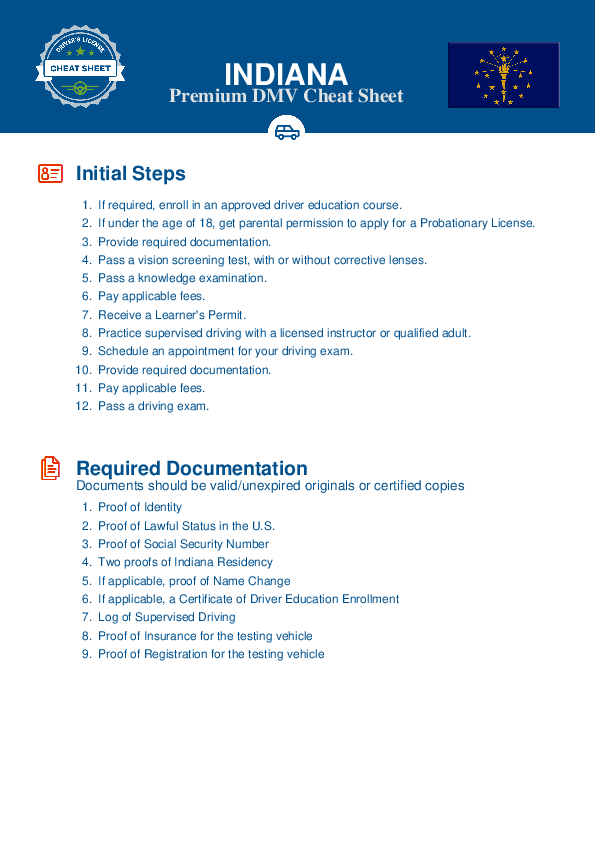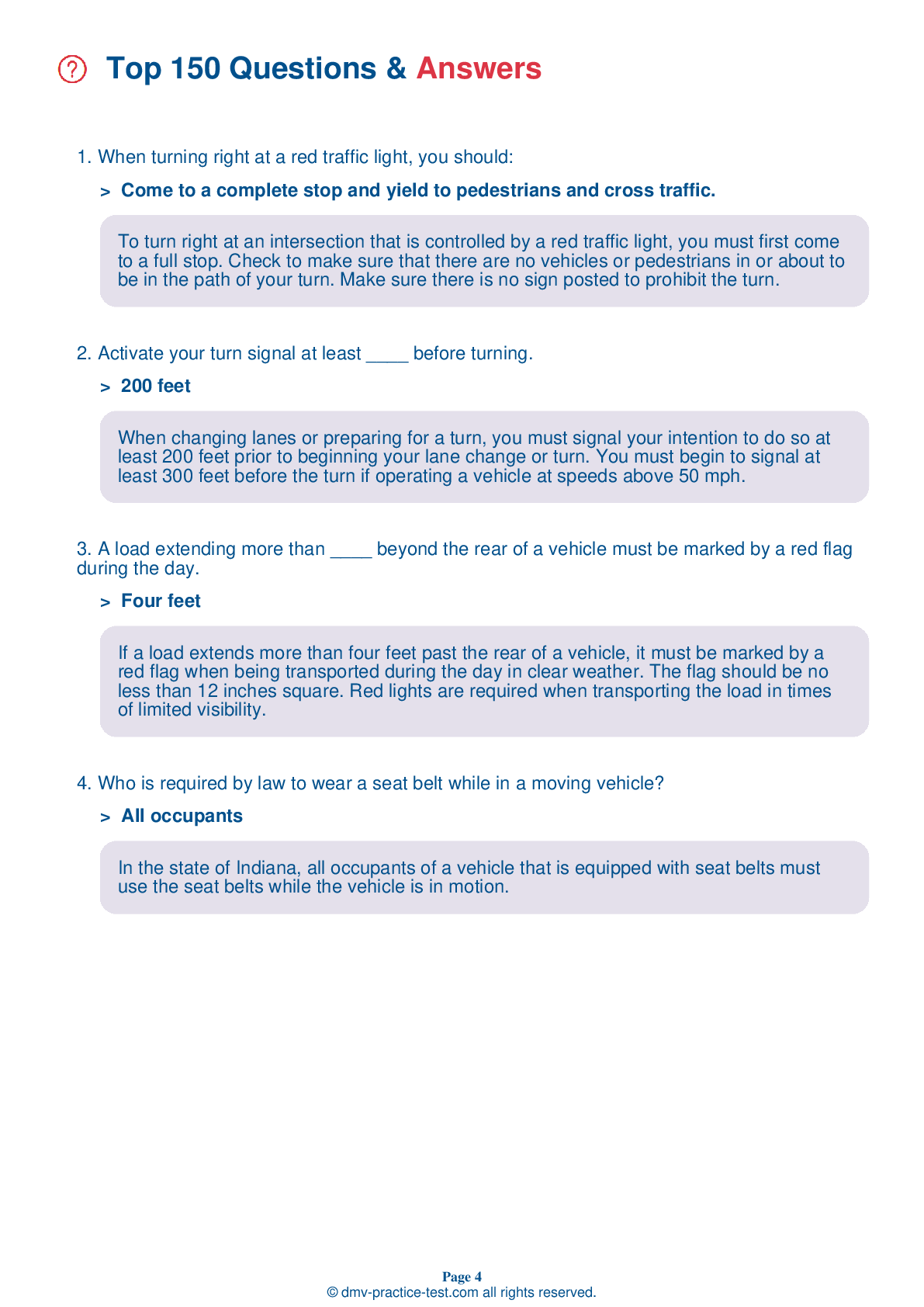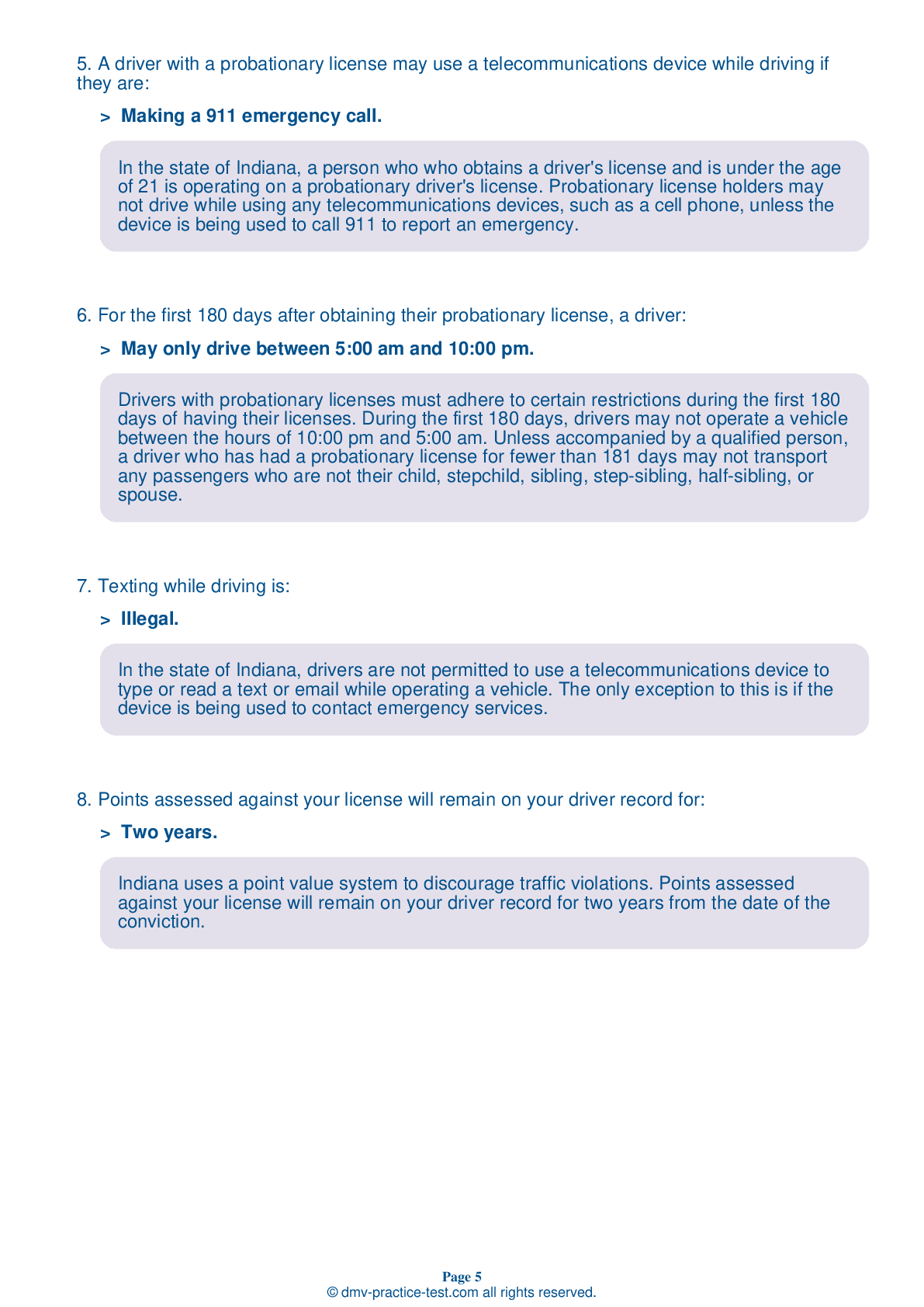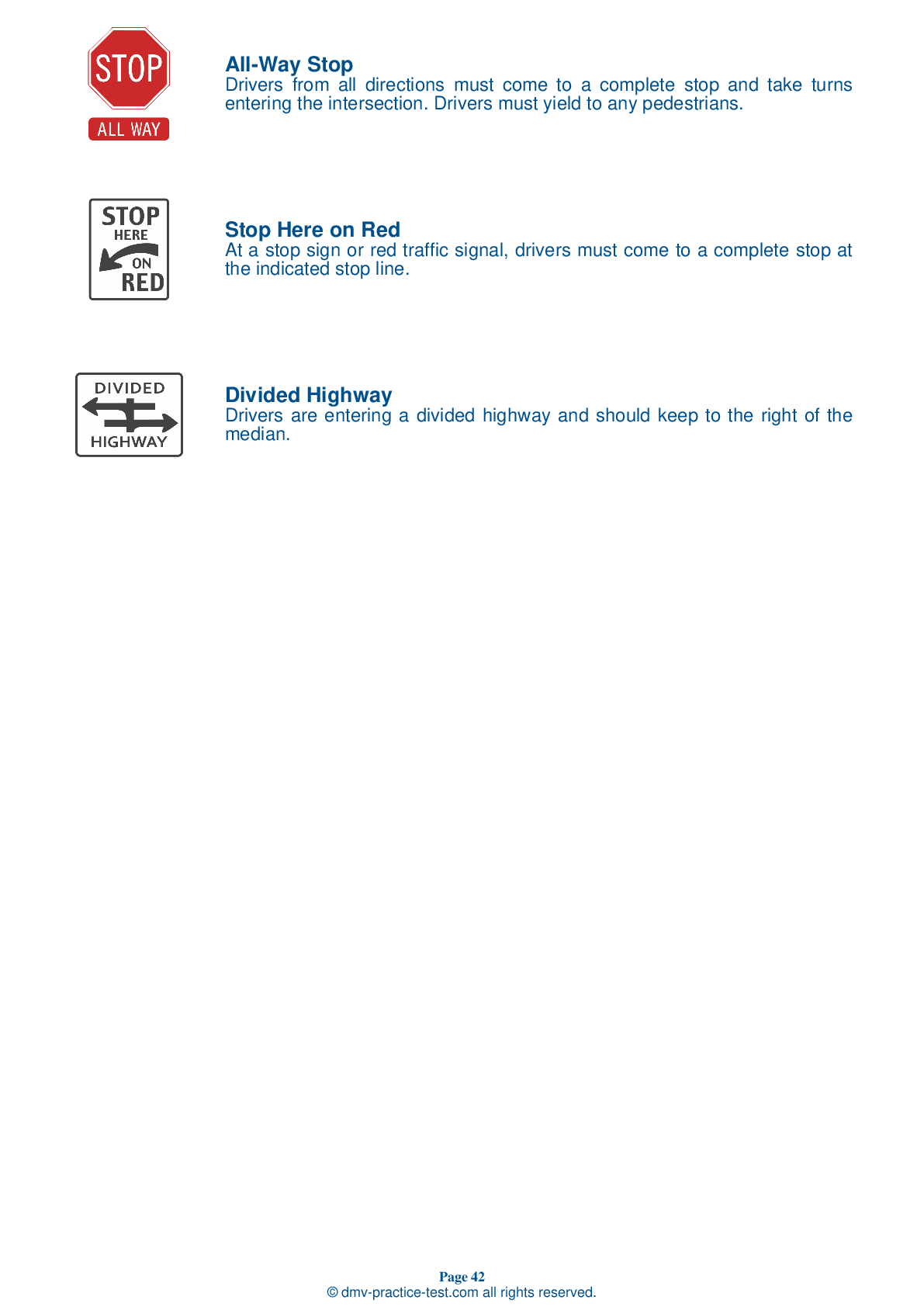FREE Indiana DMV Practice Test #22
This set of Indiana DMV practise tests has been updated for January 2026. It includes questions based on the Indiana Driver Handbook's most significant traffic signals and laws for 2026. Use actual questions that are very similar (often identical!) to the DMV driving permit test and driver's licence exam to study for the DMV driving permit test and driver's licence exam.
On the practise exam, each question gets a tip and explanation to help you remember the concepts. The written component of the official Indiana DMV test will include questions about traffic rules, traffic signs, and driving statutes, as well as information from the Driver Handbook.
To obtain a passing grade, you must correctly answer 44 of the 50 questions. Take our DMV practise exam to help you prepare for your Indiana instruction permit or driver's licence.
The DMV exam is available in several languages.
Using any kind of testing assistance will result in an automatic fail, and the DMV may take additional action against your driver's licence, so stay away from it.
1 . This sign means:
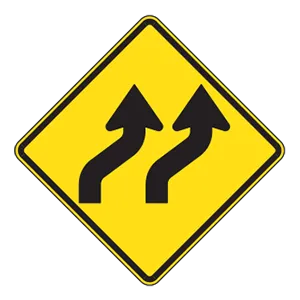
Warning signs prepare drivers for upcoming road conditions and hazards and are usually yellow with black markings. This sign tells drivers to be aware of shifting lanes and to follow the new lane trajectory.
2 . If you are stopped by a police officer, you should:
If you are stopped by the police, keep your hands on the wheel and ask any passengers to keep their hands in view as well. You should remain in the vehicle unless the police officer asks you to get out. Wait until the officer asks you to retrieve your driver license, registration, and insurance cards.
3 . This sign means:
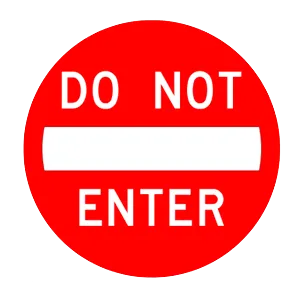
This sign means that it is not safe for drivers to enter the indicated road or driveway from their current direction. If you come across one of these signs, you should immediately turn around and drive a different way.
4 . Car drivers should know that large trucks:
A large truck has large blind spots to the front, sides, and rear of the vehicle. Avoid lingering in these areas. Because of their larger size and weight, trucks require more room to maneuver and stop than passenger vehicles.
5 . If your vehicle begins to skid, you should:
If your vehicle begins to skid, remain calm. Steer in the direction that you want to go and try not to overcorrect.
6 . A work zone:
Work zones are often stationary, but they may also be present in the form of moving vehicles striping lines, mowing, or removing snow. Work zones are marked by orange signs with black lettering or symbols. Slow down and pay extra attention when approaching or driving through a work zone.
7 . When driving past a vehicle that has just stopped in a parked position on the side of the road, you should:
When passing a vehicle that has just parked parallel to the road, you should assume the driver will open the door as you approach. Use extra caution when driving near parked vehicles.
8 . You are driving in the left lane and want to move into the right lane. You should:
When changing lanes, you should check your vehicle's blind spots by looking over your shoulder in the direction that you want to move. Always check your mirrors and turn on your directional signal before beginning a lane change.
Need Car Insurance? No problem!
Compare the best rates in Indiana and find a personalized policy that meets your needs.
1. Are You Currently insured ?
2. Married ?
3. Do you own your Home?
4. Do you have more than 1 car ?
5. Have you or a Family Member Honorably Served in U.S. Military ?
6. Your Name
7. Age
8. Zip code
IMPORTANT REMINDER:Auto Insurance is Mandatory to drive in Indiana. Get covered before you hit the road to avoid any fines.
Ranked by best match
